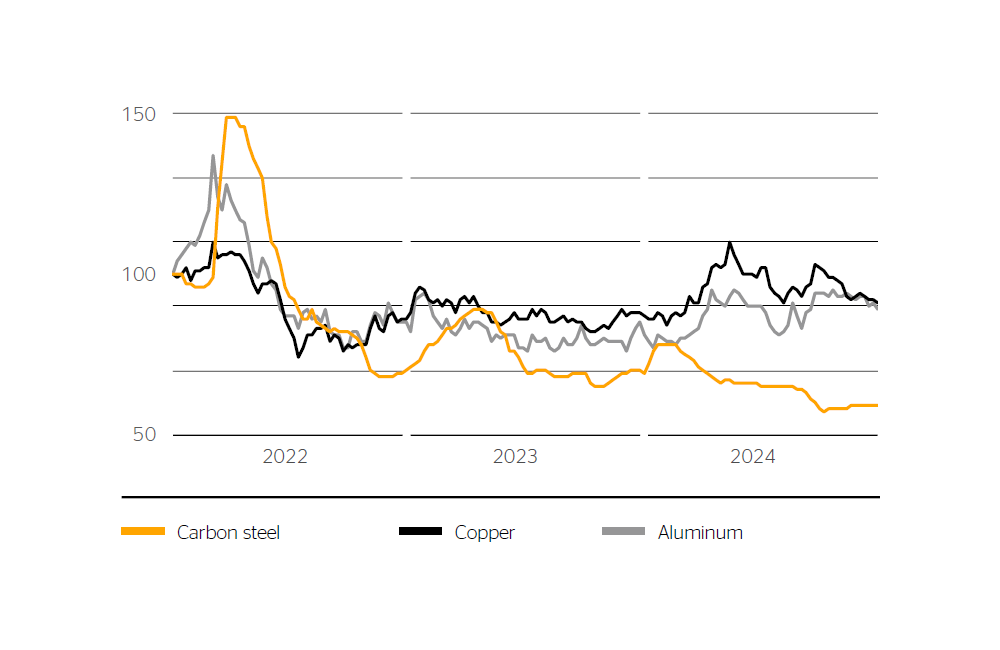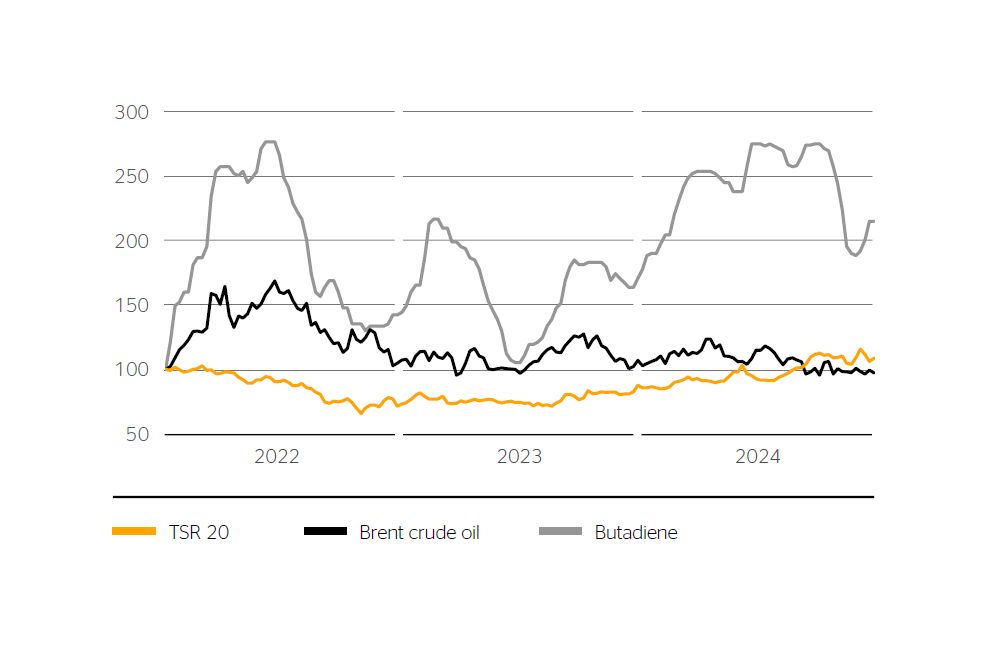Raw materials markets remained largely stable in the reporting year due to a continued improvement in availability. The normalization of global supply chains was also reflected in less volatile price developments, particularly for metals and crude oil. Nevertheless, there were significant price increases for individual raw materials such as precious metals, natural rubber and butadiene. This was attributable to ongoing geopolitical risks and a lack of availability.
Carbon steel and stainless steel are input materials for many of the mechanical components such as die-cast parts integrated by Continental into its products. Steel wire is used in particular in tire production as steel cord but also in conveyor belts and timing belts to increase tensile strength. Aluminum is used in particular for die-cast parts and stamped and bent components, while copper is used in particular in electric motors, mechatronic components and printed circuit boards.
Prices for carbon steel in euros, which had already fallen in the previous year, decreased by approximately 12% on average in 2024. The price of copper in US dollars, which had also fallen slightly in the previous year, increased by 9% on average. The average price of aluminum in US dollars was up 8% in 2024.
Precious metals such as silver and gold are used by Continental and by our suppliers to coat components. The average price of gold in US dollars was up 23% in 2024, while that of silver was up 21%.
The downward price trend of the previous year for natural rubber did not continue. The average price of natural rubber TSR 20 in US dollars was up 27% year-on-year in 2024.
Crude oil is the most important basic building block for synthetic-rubber input materials such as butadiene and styrene as well as for carbon black, various other chemicals, and plastics. The price of crude oil continued to stabilize in 2024 compared with the previous year. The annual average price of Brent crude oil in US dollars fell slightly by 2% year-on-year.
TSR 20, crude oil and butadiene
Indexed to January 1, 2022
Sources:
TSR 20: rolling one-month contracts from the Singapore Exchange (US $ cents per kg).
Crude oil: European Brent spot price from Bloomberg (US $ per barrel).
Butadiene: South Korea spot price (FOB) from PolymerUpdate.com (US $ per metric ton).
Despite the lower price of crude oil, prices for various input materials for synthetic rubber rose in 2024, and for butadiene in particular. The average prices in US dollars for butadiene and styrene rose by 47% and 5%, respectively.
Plastic resins, as technical thermoplastics, are required by Continental and our suppliers in particular for the manufacture of housing parts in the Automotive group sector and for various other plastic parts in the ContiTech group sector. The average price of resins in US dollars was down 2% in 2024.
Continental uses natural and synthetic rubber in large quantities for the manufacture of tires and industrial rubber products. It also uses relatively large quantities of carbon black as a filler material and of steel cord and nylon cord as structural materials. Due to the high volumes and direct purchasing of raw materials, their price development has a significant influence on the earnings of the Tires and ContiTech group sectors.







